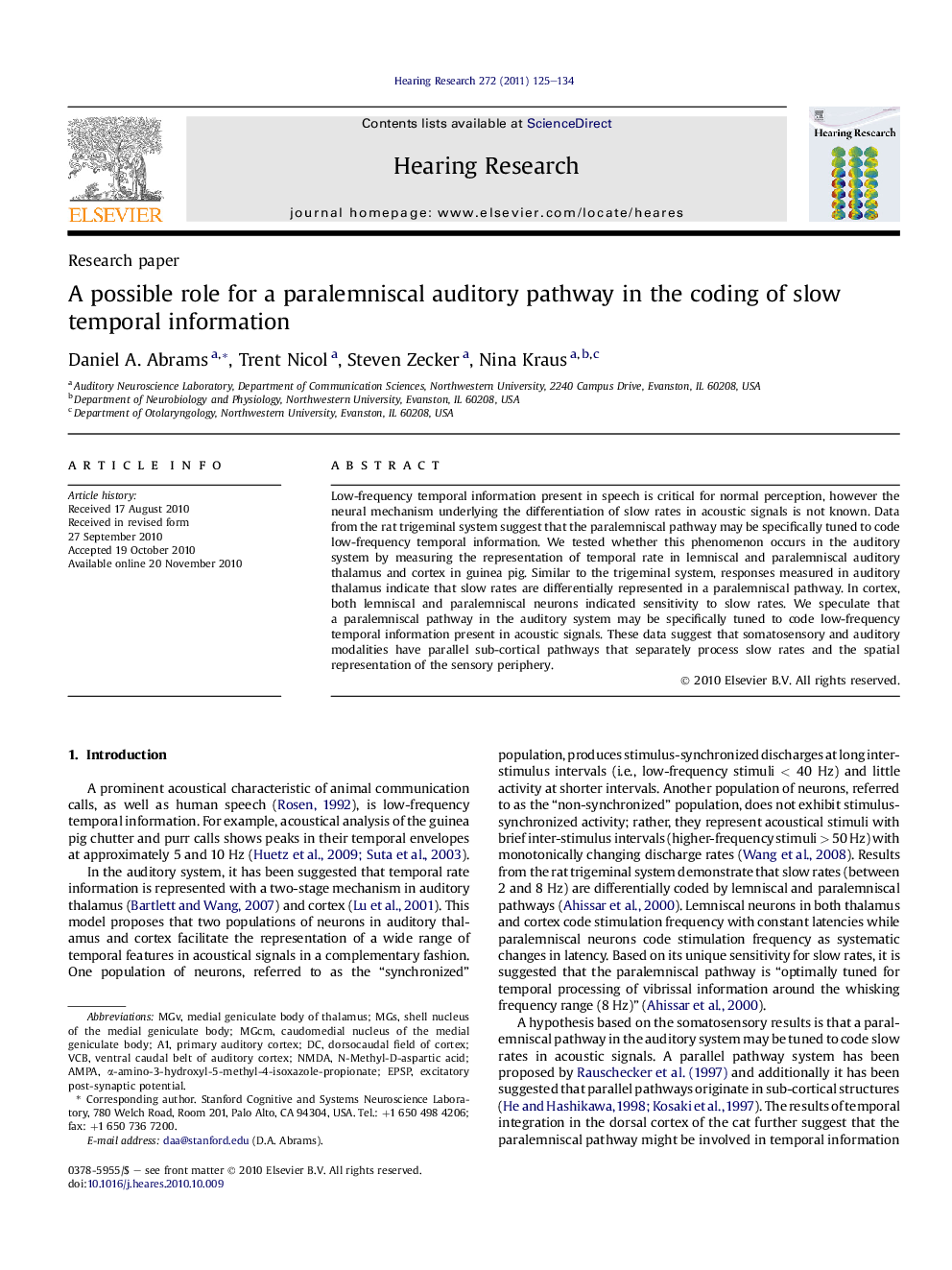| Article ID | Journal | Published Year | Pages | File Type |
|---|---|---|---|---|
| 4355558 | Hearing Research | 2011 | 10 Pages |
Low-frequency temporal information present in speech is critical for normal perception, however the neural mechanism underlying the differentiation of slow rates in acoustic signals is not known. Data from the rat trigeminal system suggest that the paralemniscal pathway may be specifically tuned to code low-frequency temporal information. We tested whether this phenomenon occurs in the auditory system by measuring the representation of temporal rate in lemniscal and paralemniscal auditory thalamus and cortex in guinea pig. Similar to the trigeminal system, responses measured in auditory thalamus indicate that slow rates are differentially represented in a paralemniscal pathway. In cortex, both lemniscal and paralemniscal neurons indicated sensitivity to slow rates. We speculate that a paralemniscal pathway in the auditory system may be specifically tuned to code low-frequency temporal information present in acoustic signals. These data suggest that somatosensory and auditory modalities have parallel sub-cortical pathways that separately process slow rates and the spatial representation of the sensory periphery.
Research highlights►In auditory thalamus, lemniscal and paralemniscal neurons differentially represent slow rates. ► In auditory cortex, lemniscal and paralemniscal neurons are also sensitive to slow rates. ► Results are similar to findings from the somatosensory literature. ► Provide a role for paralemniscal thalamus in auditory temporal coding.
